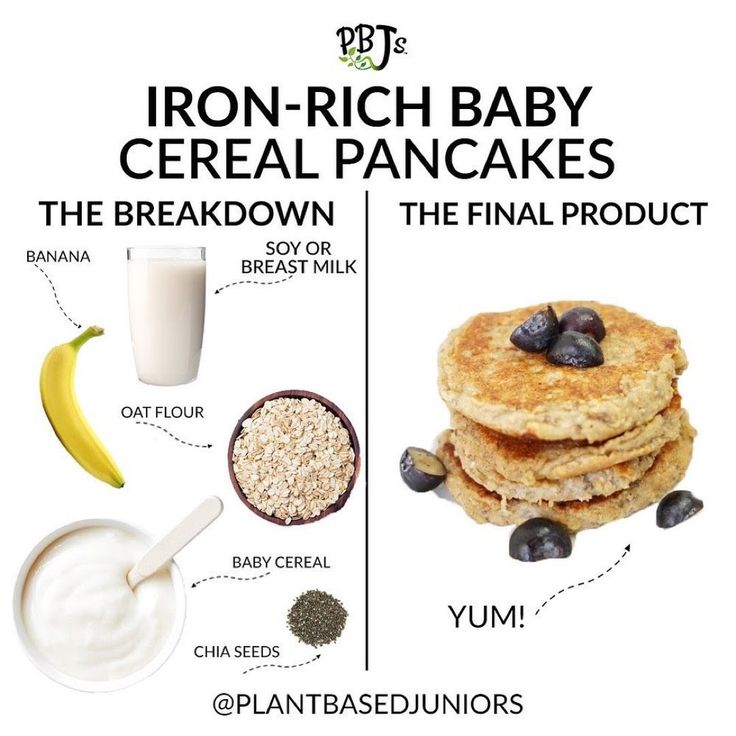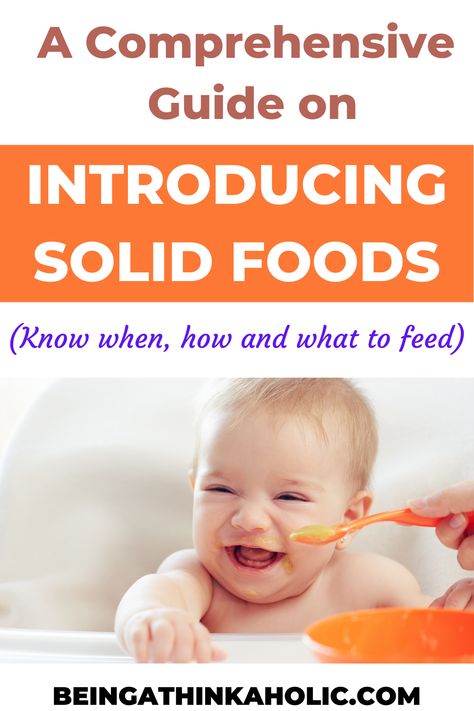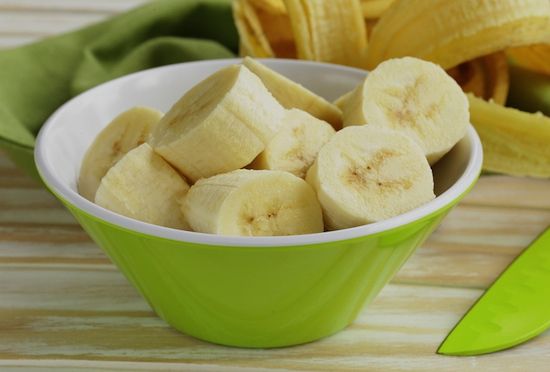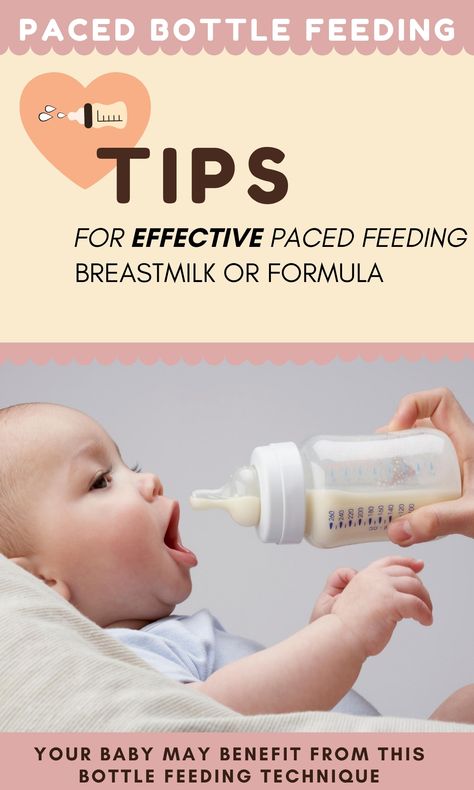Baby food snack ideas
100 Best Baby Snacks (healthy ideas & easy recipes)
100 Baby Snacks – healthy and easy recipe ideas for babies and toddlers 9 months – 2 years! This post covers when to serve snacks to your baby (and young toddlers), serving sizes, a rundown of my favorite snack containers, PLUS I’m going to share with you over 100 foods and recipes that are the PERFECT healthy snacks for your baby and toddler!
Medically reviewed and co-written by Jamie Johnson, Registered Dietitian Nutritionist (RDN), and Lauren Braaten, Pediatric Occupational Therapist (OT).
Baby SnacksLooking for some inspiration for what to feed your baby for snacks?
Then you’ve come to the right place!
Snacks for baby can be as easy as cutting up fresh strawberries and mangos or serving chopped veggies with hummus. They can also be freezer-friendly recipes such as Pumpkin Pancakes, Blender Muffins or Spinach Waffles. And don’t forget those easy on-the-go snacks like Strawberry Applesauce in a reusable pouch or Cheesy Whole-Grain Crackers.
Whatever your baby snacking needs are, this post has got you covered!
Snacks for Baby Video
Watch this video to learn more about what to feed your baby and toddler for a snack!
Snacks for 9-12 month oldsBabies usually start to become hungrier between meals around this age, so it may be appropriate to start giving snacks. Basically, any mashable food is good to serve to your baby in 2-3 inch strips or chopped into “pea” size pieces. Aim to include at least 2 food groups to make a balanced, nutritious snack.
- Soft fresh fruits- banana, blueberries, kiwi, watermelon, mango, peaches, pears, raspberries, etc.
- Steamed veggies- sweet potatoes, squash, broccoli, cauliflower, carrots, peppers, string beans, etc.
- Puffs
- Teether crackers
- Yogurt and fruit
- Cottage cheese and fruit
- Hummus
- Avocado
- Unsweetened applesauce
- Well cooked pasta
- No salt added and rinsed canned beans
- Lentils
- Peanut/almond butter – mixed into yogurt or applesauce or thinly spread on toast
- Low sodium turkey/ham/chicken slices
- Hard-boiled egg
- Egg muffins
- Baby food pouches
By this age, toddlers’ diets now rely more on solid foods rather than breastmilk or formula so another snack may be added throughout the day in a larger portion. Toddlers can have any foods a baby can, plus some harder textures, and now honey.
Toddlers can have any foods a baby can, plus some harder textures, and now honey.
- All of the above foods
- Cheese sticks
- Cheerios or other small, whole-grain cereal
- Freeze-dried fruit
- Rice cakes
- Whole-grain crackers
- Quartered cherry tomatoes
You can start giving baby a snack around 9-12 months, as she starts relying more on solid food rather than breastmilk and formula to fill her up. At 12 months, most toddlers get 2-3 snacks a day- between breakfast and lunch, lunch and dinner, and sometimes after dinner if needed. But keep in mind that every child is different and may need more or less. Pay attention to your child’s cues to see if she is getting hungry in between meal times. It’s best to have a set time for snacks every day for kids since they do best on a routine.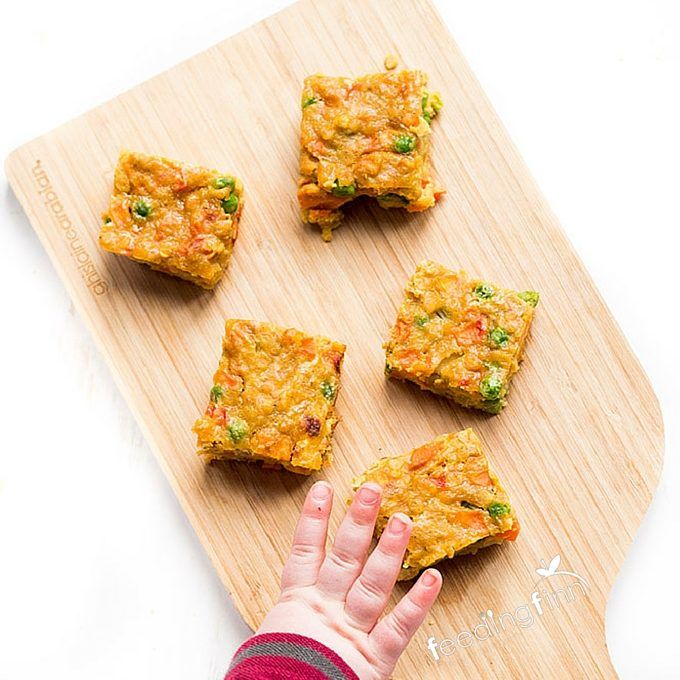
Serving sizes will vary from child to child but generally, toddlers need a quarter of the portion an adult does and babies generally just need a few tablespoons. Parents tend to overestimate servings for their children. I recommend starting small to not overwhelm your baby and give seconds if your baby is giving cues. Let baby determine how much to eat. Here are some examples of typical serving size for toddlers:
- 1/4 cup dry cereal
- 1/2 cup whole milk
- 1/2 banana
- 1/4 -1/2 slice of bread
- 1/2 egg
- 1 oz. meat
- 1/2 piece of fresh fruit
- 1/3 cup of yogurt
- 1-2 tablespoons of cooked veggies
Try to include at least two food groups when constructing a snack to make it nutritious and filling. As a reminder, the food groups are fruits, vegetables, grains, protein, and dairy. And try to keep added sugar to a minimum. Below are some sample snacks with at least 2 food groups:
As a reminder, the food groups are fruits, vegetables, grains, protein, and dairy. And try to keep added sugar to a minimum. Below are some sample snacks with at least 2 food groups:
- Yogurt and blueberries
- Hummus and peeled cucumber spears and whole-grain pita bread
- Peanut butter and banana
- Cottage cheese and strawberries
- Cheese stick and pear slices
- Applesauce and Cheerios
- Boiled egg and steamed carrot sticks
- Avocado and whole grain bread
If you are looking to take baby’s snacks on the go or to daycare, it’s super important to have small containers that don’t leak! Here is a list of our favorite brands that have been put to the test over the years.
- WeeSprout Glass Baby Food Storage Jars: great size for storing and serving small snacks for baby.
 They also make a plastic version. Some daycares do not accept glass, so make sure to get plastic if this applies to you!
They also make a plastic version. Some daycares do not accept glass, so make sure to get plastic if this applies to you! - Skip Hop Grab & Go Stackable Food Container Set: a great system that keeps the different snacks separated (so the juices of the strawberries don’t leak on the muffins) and is awesome for tossing into a diaper bag.
- GoBe Kids Snack Spinner: a fun and interactive way for baby and toddler to try new snacks. Toddlers will especially love this snack spinner!
Favorite Recipes
Homemade Yogurt Melts for Baby
4.58 stars (40 ratings)
These 2-Ingredient Healthy Yogurt Melts are great for babies and toddlers as a cold refreshing treat, as a gumming tool to help ease teething pain, or for a quick yummy snack!
Get the recipe
Easy Spinach Muffins
5 stars (8 ratings)
These easy Spinach Muffins are a hit with babies, toddlers and kids! Made with wholesome ingredients and filled with green spinach!
Get the recipe
3-Ingredient Banana Pancakes for Baby
5 stars (127 ratings)
Made with only 3 simple ingredients – banana, egg and flour, yet these pancakes are fluffy, soft and perfect for baby, baby-led weaning and toddlers!
Get the recipe
Easy Whole Grain Baked Cheese Crackers
4.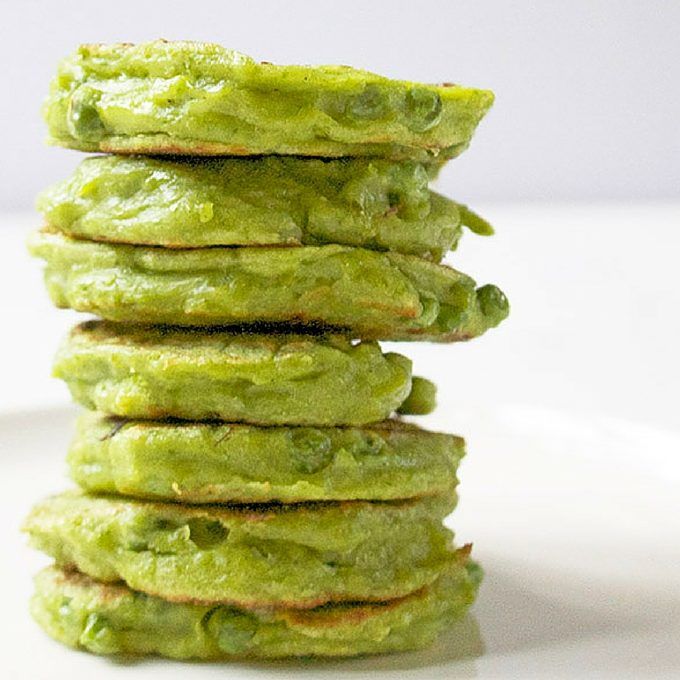 93 stars (28 ratings)
93 stars (28 ratings)
These snack-able whole grain crackers are going to be a big hit with your toddler. With no rolling involved, these wholesome crackers are also a snap to make.
Get the recipe
Avocado Green Smoothie for Baby + Toddler
4.75 stars (12 ratings)
A tasty green smoothie for baby! Loaded with unsaturated fats from the avocado, protein from the yogurt and iron from the spinach, this smoothie can be served as a healthy breakfast, lunch or snack for baby.
Get the recipe
Veggie SnacksVeggies don’t have to be offered just at mealtime. Snack time is a great time to serve veggies to your baby. Depending on the age of your baby, you may need to steam or cook the veggies before serving. Serve veggies in spears or strips. Pair the veggies with a fun dip for some snack time fun.
- Carrot Sticks
- Green Beans
- Sugar Snap Peas
- Red, Yellow or Orange Peppers
- Zucchini Spears
- Broccoli
- Cauliflower
- Cucumber Spears (peeled)
- Green Peas (frozen and thawed)
- Cherry Tomatoes (cut lengthwise into 4 or 6 pieces)
- Veggie Quesadilla
- Kale Chips: Store-Bought or Homemade
- Roasted Seaweed
- Hummus: Store-Bought, Carrot, Pea, Veggie-Loaded or Beet Hummus
- Black Bean Dip
- Pesto: Store-Bought, Classic or Spinach Pesto
Fruit is a great snack option for your baby as all fruit is filled with essential nutrients for growing babies! Plus, they are reliably available, easy to pack for an on-the-go snack, and most babies like their sweet taste.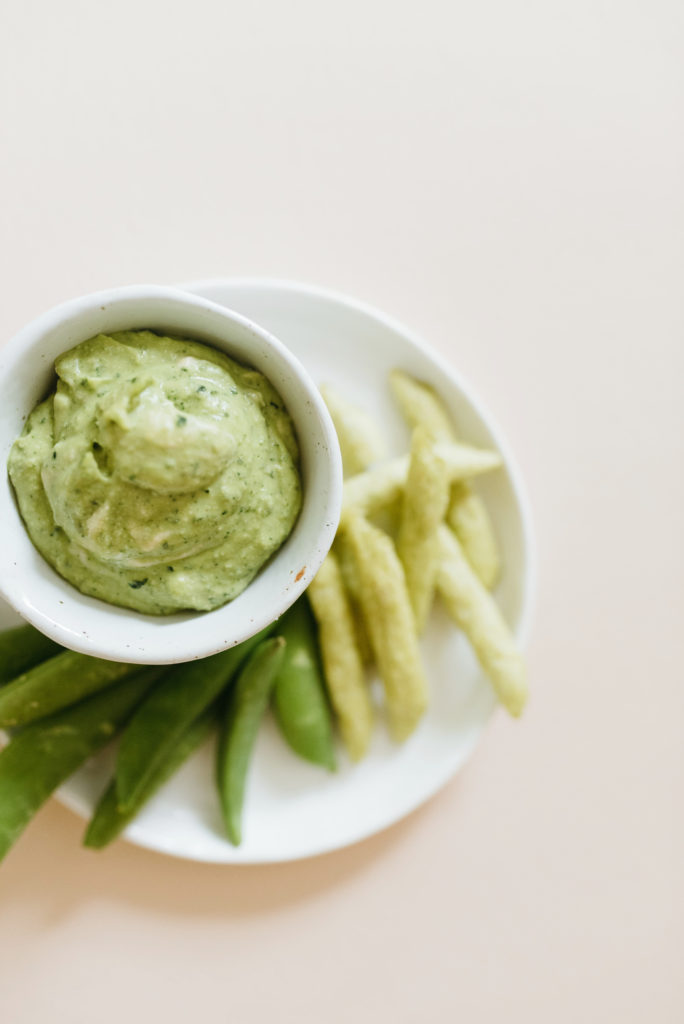
Soft fruits can be served in long 2-3″ strips or cut into “pea” size pieces. If the fruit is too hard (such as unripe pears or some apple varieties), you can gently steam slices of chunks of them on the stove or in the microwave for 1-2 minutes.
- Apples
- Pears
- Bananas
- Mango
- Peaches
- Strawberries
- Blueberries
- Honeydew
- Watermelon
- Raspberries
- Blackberries
- Grapes (cut lengthwise into 4 or 6 pieces)
- Oranges
- Clementines
- Avocados
- Applesauce or Apple Puree: (homemade or store-bought) – cinnamon, carrot, strawberry applesauce and 8 more easy flavors
- Freeze-dried fruits: strawberries, mango, berries, banana, etc.
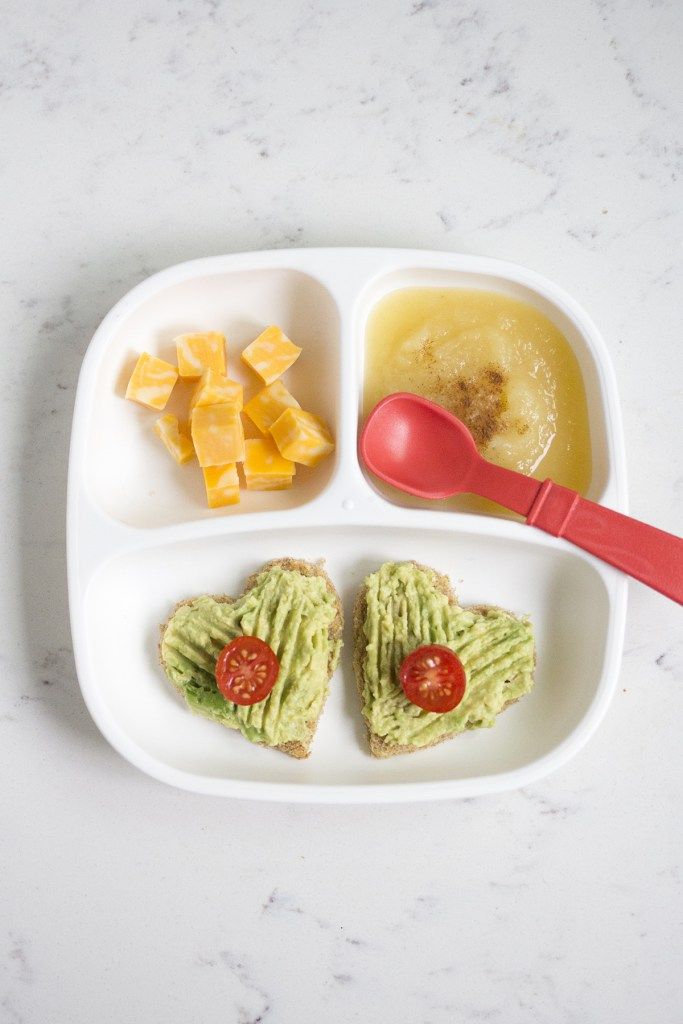 Freeze-dried fruit is a great option for baby and young toddlers because they disintegrate in their mouths in seconds, making them not a choking hazard.
Freeze-dried fruit is a great option for baby and young toddlers because they disintegrate in their mouths in seconds, making them not a choking hazard. - Baby Food Pouches: homemade or store-bought
- Baby-Friendly Popsicles: hidden-veggie carrot & orange, 8 yogurt popsicles and 7 more veggie-filled flavors
- Healthy Strawberry Fruit Dip
- Spiced Apple Dip
- Yogurt: plain or vanilla
- Nut or Seed Butter: if too thick, you can warm it slightly in the microwave to thin it out
Frozen Fruit Tip: An easy way to serve a wide variety of fruit to your baby year-round is to use frozen fruits that have been thawed. Bigger frozen fruits such as mango, peaches, or pineapple can be thawed and then patted dry in a paper towel or clean kitchen towel (to make them easier to eat) and then served to your baby.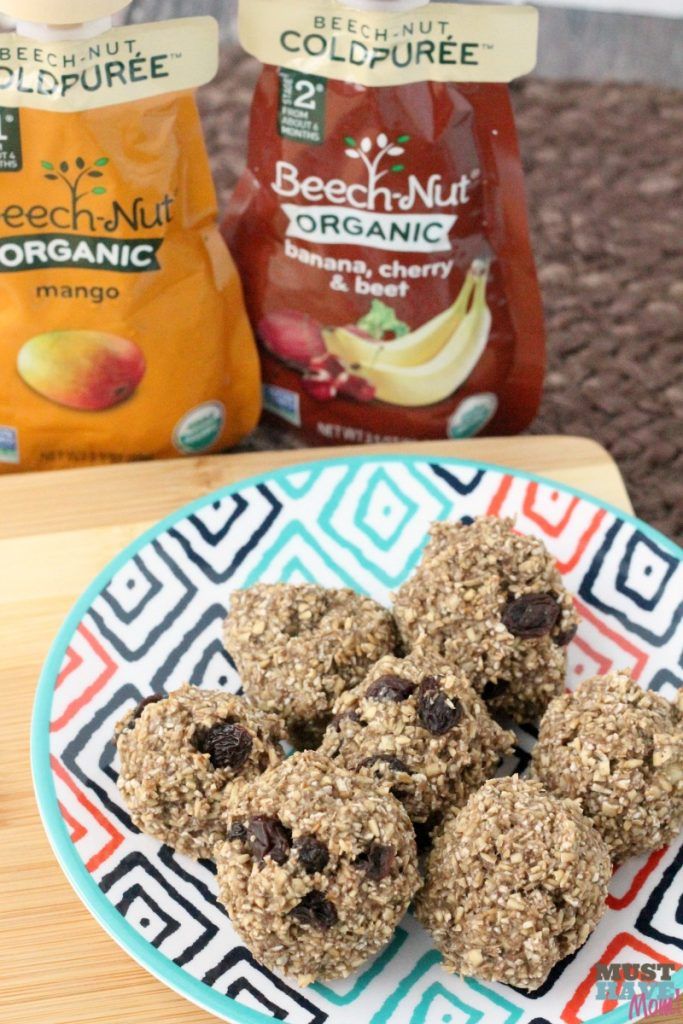 Smaller frozen fruits such as berries or cherries can be thawed, patted dry and be served as is or mashed with the back of a fork to make a “jam” like consistency. You can serve this as-is or mixed into yogurt or applesauce.
Smaller frozen fruits such as berries or cherries can be thawed, patted dry and be served as is or mashed with the back of a fork to make a “jam” like consistency. You can serve this as-is or mixed into yogurt or applesauce.
Serving carbohydrates to baby as a snack will help provide the energy baby needs in order to crawl, walk or scoot all around the house (especially to the places you don’t want them to go to:).
- Pancakes: Store-Bought (frozen with whole grains), 3-Ingredient Banana, Pumpkin, Sweet Potato, Blueberry Sheet Pancakes, Spiced Blender or Spinach Pancakes
- Muffins: Store-Bought (with whole grains and no or low sugar), or 15 Healthy Muffin Recipes, Easy Spinach Muffins for Baby
- Waffles: Store-Bought (frozen with whole grains), Spinach, Golden Milk or Sweet Potato Waffles
- Toast: Avocado + Egg toast, Almond Butter with Banana, or smeared with cream cheese and a sprinkle of hemp seeds or sugar-free jam
- PB&J: made with whole-grain bread, a light spread of nut or seed butter, and 100% fruit jam with no added sugar
- Cereal: no sugar added whole grain such as O-cereal, Chex, etc.
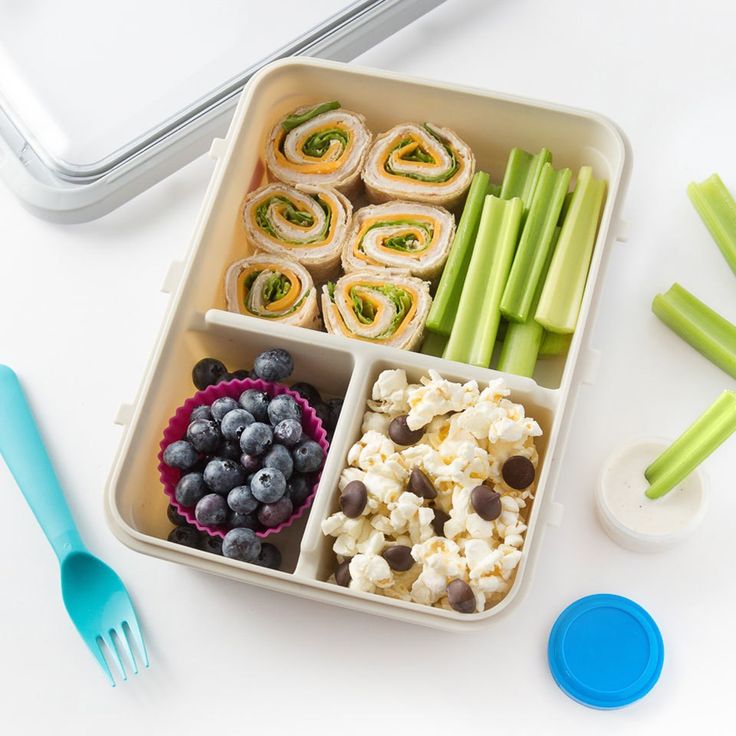 (soften in a little milk, breast milk, or formula if needed)
(soften in a little milk, breast milk, or formula if needed) - Oatmeal: Baked Oatmeal Cups, Peanut Butter Oatmeal Bake or Blueberry Oatmeal
- Crackers: Store-Bought Whole Grain or Homemade Cheese Crackers
Time-Saving Tip: when making a batch of muffins, pancakes, or waffles for baby, double the recipe and freeze some so you will always have a healthy snack for your baby on hand. To thaw, heat in the microwave in 20-second increments until warm or pop into the toaster.
Protein Filled SnacksProviding a serving of protein to your baby at snack time is a great idea as protein helps to fill your baby up and helps with muscle growth and development. Unless you are a plant-based family, aim to give a combination of both plant and animal proteins for a variety of nutrients and textures.
- Whole Milk Yogurt: Store-Bought or 8 Fun Flavors to Try
- Cottage Cheese: Full-Fat Store-Bought or with Fruit on Top
- Eggs: 8 Easy Eggs for Baby
- Cheese: string cheese, shredded cheese or small cubes or strips, crumbled goat or feta
- Tofu: baked or sauteed in a little olive oil
- Beans: chickpeas, kidney, northern, black beans, edamame – rinsed and chopped or gently mashed with the back of a spoon
- Lentils: Cooked or no-salt-added canned
- Meatballs: Store-Bought (look for no added sugar varieties), Chicken Carrot or Parmesan Meatballs, chopped up or in strips
- Hummus: Store-Bought, Carrot, Pea, Veggie-Loaded or Beet Hummus
- Smoothies: 5 Smoothies for Babies or 15 Smoothies for Toddlers
- Fish: Low sodium canned salmon or tuna
All baby snacks don’t have to be homemade! Purchasing a selection of store-bought snacks for baby to have on hand, will make snack time for baby and toddler a breeze. You can also pair store-bought snacks with a serving or fruits, cheese or veggies.
You can also pair store-bought snacks with a serving or fruits, cheese or veggies.
- Baby Food Pouches (a guide to my favorite store-bought brands)
- Freeze-dried fruits: strawberries, mango, berries, banana, etc
- Baby Puffs: this and this are our favorites
- Baby Melts: this and this are our favorites
- Cereal: no-sugar-added whole grain such as O-cereal or Chex
- Crackers: whole grain
- Yogurt: look for low or no added sugar, this or this are great options
- Fruit: canned or in a cup within 100% fruit juice or fruit pouches
Having reusable pouches filled with fruit, veggie, and/or yogurt is an easy way to have a healthy snack on hand for your baby. I like to load my reusable pouches up on the weekend to have an easy grab-and-go snack at the ready all week long.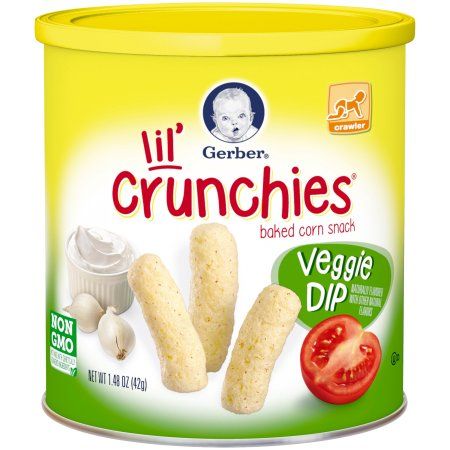
- veggie puree
- fruit puree
- yogurt
- applesauce
- Apple, Carrot + Sweet Potato Baby Puree
- Apple, Raspberry + Vanilla Baby Food with yogurt
- Creamy Mango-licious Baby Food Puree
- Applesauce (storebought or homemade with no added sugar) mixed with yogurt
A great way to soothe your baby’s sore gums is to give them a cool melt or popsicle to help relieve teething pains.
- Melts: Yogurt Melts or Peanut Butter Banana Melts
- Baby-friendly Popsicles: Hidden-Veggie Carrot & Orange, 8 Yogurt Popsicles and 7 more veggie-filled flavors
- Cold watermelon on the rind
- Cold mango pit
- Mini Meal: try to think of snacks for baby as mini-meals so that they are a combination of carbs, protein and fruit or veggie.
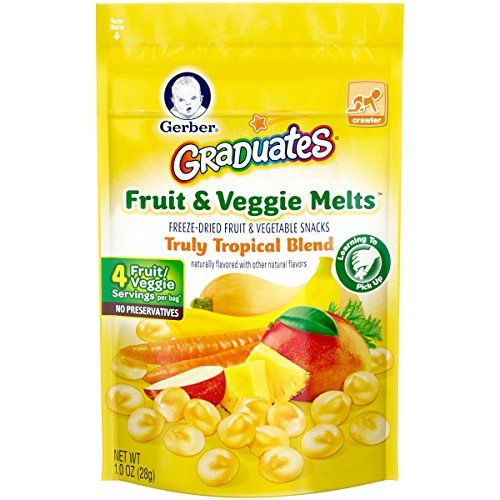 When serving these mini-meals, the goal is to provide baby with enough healthy food to fuel their babies until their next meal or bottle.
When serving these mini-meals, the goal is to provide baby with enough healthy food to fuel their babies until their next meal or bottle. - Mix it Up: even if baby has a clear preference on what they like to eat for their snacks, try to mix up their snack offerings so you are continuously opening and expanding baby’s palate.
- Start Small: Babies and young toddlers won’t need much of a snack, just a few tablespoons should be offered of each snack item at a time. As baby grows, so will their snack time servings. Also, baby and toddler’s appetite will vary from day to day, so if baby doesn’t want snack one day or if they want several servings of snack the next, just remember this is completely normal.
Veggie Snacks
- Carrot Sticks
- Green Beans
- Sugar Snap Peas
- Red, Yellow or Orange Peppers
- Zucchini Spears
- Broccoli
- Cauliflower
- Cucumber Spears
- Green Peas
- Cherry Tomatoes, cut lengthwise into 4 or 6 pieces
- Veggie Quesadilla
- Kale Chips, Store-Bought or Homemade
- Roasted Seaweed
Fruit Snacks
- Apples
- Pears
- Bananas
- Mango
- Peaches
- Strawberries
- Blueberries
- Honeydew
- Watermelon
- Raspberries
- Blackberries
- Grapes, cut lengthwise into 4 or 6 pieces
- Oranges
- Clementines
- Avocados
- Applesauce or Apple Puree, homemade or store-bought
- Freeze-dried Fruits, strawberries, mango, berries, banana, etc.
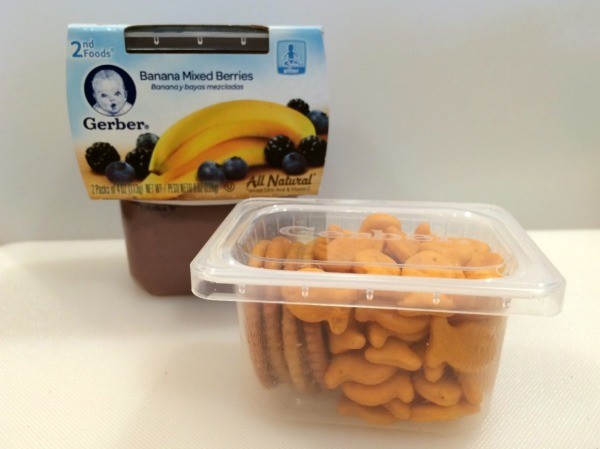
- Baby Food Pouches, homemade or store-bought
- Baby-Friendly Popsicles
- Whole Milk Yogurt
- Cottage Cheese
- Eggs, hard-boiled, scrambled, roll-ups, etc
- Cheese, string cheese, shredded cheese (thicker is easier for baby to eat) or small cubes or strips, crumbled goat or feta
- Tofu, baked or sauteed in a little olive oil
- Beans, chickpeas, kidney, northern, black beans – rinsed and chopped or gently mashed with the back of a spoon
- Meatballs, homemade or store-bought
- Hummus, homemade or store-bought
- Smoothies
Carbs
- Pancakes, homemade or store-bought
- Muffins, homemade or store-bought
- Waffles, homemade or store-bought
- Toast, avocado + egg toast, almond butter, and banana, smeared with cream cheese and hemp seeds or sugar-free jam
- PB&J, made with whole-grain bread, a light spread of nut or seed butter, and 100% fruit jam with no added sugar
- Cereal, no sugar added whole grain such as O-cereal or Chex, soften in a little milk, breast milk or formula if needed
- Oatmeal, Baked Oatmeal Cups
- Crackers homemade or store-bought
- Baby Puffs
- Baby Melts
- Cereal, no sugar added, whole grain such as O-cereal or Chex, etc
- Crackers, whole grain
- Yogurt, tubes or cups, low or no added sugar
- Fruit, canned or in a cup within 100% fruit juice
- Freeze-Dried Fruits, strawberries, mango, berries, banana, etc
Dips for Fruit and Veggies
- Hummus, homemade or store-bought
- Black Bean Dip
- Pesto, homemade or store-bought
- Spiced Apple Dip
- Healthy Strawberry Fruit Dip
- Yogurt, plain or vanilla
- Nut or Seed Butter, warmed a little to thin out
Select one or more items on the above list.

For recipes, follow the recipes provided. For single-ingredient snacks, cut into small "pea" size pieces or long strips depending on babies age.
Serve 1-2 tablespoons of each item to baby.
Age: 9+ months
Recipes: please refer to the main post for full recipes
Time-Saving Tip: when making a batch of muffins, pancakes, or waffles for baby, double the recipe and freeze some so you will always have a healthy snack for baby on hand. To thaw, heat in the microwave in 20-second increments until warm or pop into the toaster.
Frozen Fruit Tip: An easy way to serve a wide variety of fruit to baby year-round is to use frozen fruits that have been thawed. Bigger frozen fruits such as mango, peaches, or pineapple can be thawed and then patted dry in a paper towel or clean kitchen towel (to make them easier to eat) and then served to baby. Smaller frozen fruits such as berries or cherries can be thawed, patted dry and be served as is or mashed with the back of a fork to make a “jam” like consistency. You can serve this as-is or mixed into yogurt or applesauce.
Bigger frozen fruits such as mango, peaches, or pineapple can be thawed and then patted dry in a paper towel or clean kitchen towel (to make them easier to eat) and then served to baby. Smaller frozen fruits such as berries or cherries can be thawed, patted dry and be served as is or mashed with the back of a fork to make a “jam” like consistency. You can serve this as-is or mixed into yogurt or applesauce.
Did you make this recipe?
Tag @babyfoode on Instagram and hashtag it #babyfoode!
Pin Recipe Email a Friend
Master List of Baby Snacks (Easy Finger Foods + Recipes)
Make snack time easier with this Master List of Baby Snacks. You’ll find the best easy and healthy finger foods for babies and one year olds that are simple to prepare and serve—and also super yummy!
Baby Snacks
Once your sweet baby has started solids, generally has the hang of things, and you’re ready to add in some snacks…it can be hard to know what to offer. And this post is here to help! You will find easy baby snacks organized by food group, the best homemade recipes to try, and tips for serving food to this age group to ensure they are yummy and easy to eat.
And this post is here to help! You will find easy baby snacks organized by food group, the best homemade recipes to try, and tips for serving food to this age group to ensure they are yummy and easy to eat.
TIP: Depending on the baby, how much they are nursing or drinking from bottles, and the schedule of your day, you may or may not have time to add in snacks. You can start them around 9 months or at 12 months—whatever works best for your family and the appetite of your child.
Snacks for 9 Month Old Babies
At about 9 months, babies develop the pincer grasp, or the ability to pick up small (think the size of a pea) pieces of food. This usually opens up a whole wide range of foods that babies can feed themselves—and that is primarily the types of foods you’ll find in this post, along with some pureed options to round things out.
TIP: Find my Master List of Early Finger Foods to refresh your memory on all of the many food options you can serve at any meal to babies starting at age 9 ish months.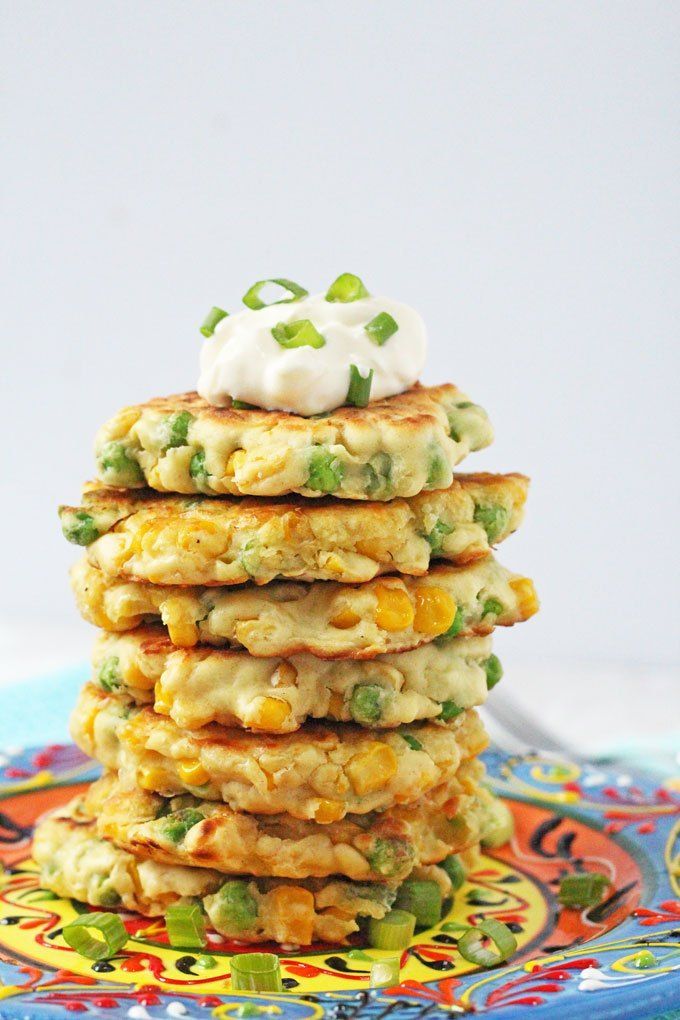
Snacks for One Year Olds
Many one year olds from ages 12 months through 16-18 months are in this same category of eating small pieces of finger foods, so any of these foods are appropriate for them too. (Actually, they are of course appropriate for any age, though kids past that 18 month mark are more able to take bites from larger pieces of food.)
TIP: Find my One Year Old Feeding Schedule here.
Cheerios with Carrot Puree PouchBaby Snacks: Fruits and Veggies
These produce-based snacks are great options to have in the mix. I like to pair them with another food group if possible (though baby won’t always eat perfectly balanced snacks and that’s okay!).
- Baby Food Pouches
- Mashed roasted sweet potato, broken up into small pieces
- Warmed frozen peas
- Roasted Zucchini, diced small
- Diced Roasted Sweet Potato or Butternut Squash
- Fresh blueberries, cut in half or quarters
- Fresh raspberries, broken into small pieces
- Frozen fruit, warmed and fully thawed and chopped (such as blueberries, raspberries, strawberries or mango)
- Freeze-dried fruit (it dissolves very fast)
- Banana, broken into small segments (they are less slippery this way versus slicing them)
- Avocado, diced and mashed slightly (be sure it’s ripe and very soft)
Carbohydrate Snacks for Baby
Babies (and kids!) need carbohydrates in their diets, and we need to serve them often.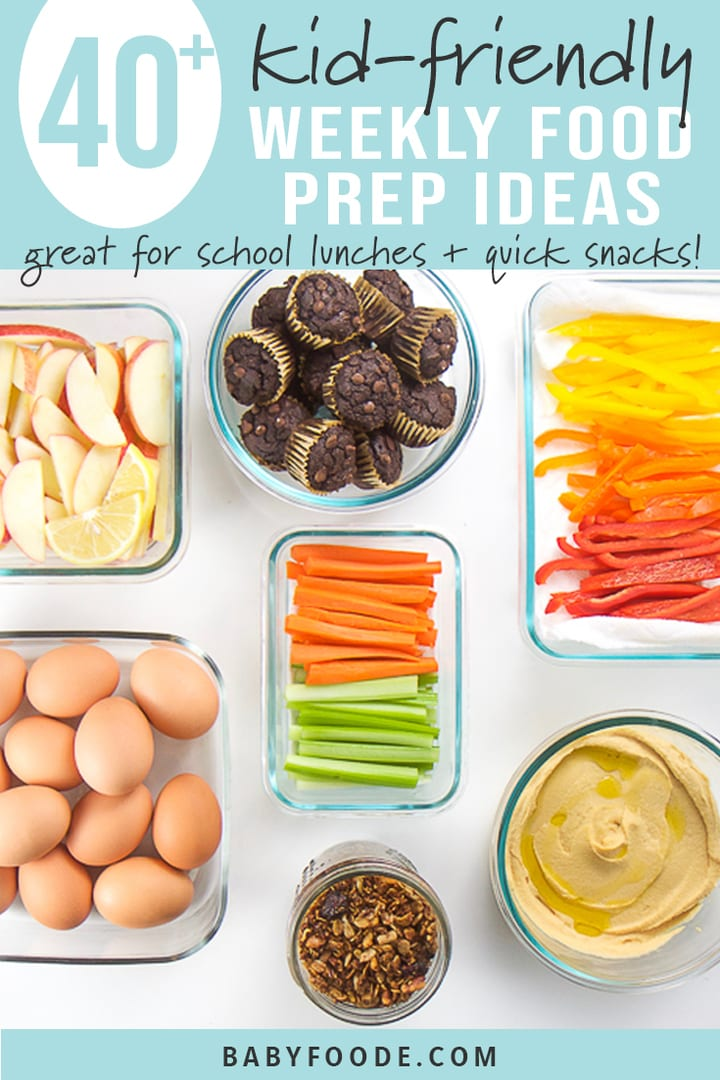 Look for whole grains when possible to incorporate fiber and B vitamins. Combine with produce or protein at snack time.
Look for whole grains when possible to incorporate fiber and B vitamins. Combine with produce or protein at snack time.
- Spinach pancakes diced (these are great to freeze and pull out of the freezer to warm one at a time)
- Baby Puffs
- Peanut Butter Puffs
- Baby Banana Muffin
- O cereal (soften in nondairy unsweetened milk or yogurt as needed)
- Chex cereal (soften in nondairy unsweetened milk or yogurt as needed)
- Diced whole grain bread with applesauce or any fruit puree, or mashed avocado
- Baked Oatmeal, diced
- Leftover pasta, rice, or oatmeal
- Sweet Potato Teething Biscuits
Protein Snacks for Baby
Incorporating protein and healthy fats into baby’s food is a great way to help them find their food filling and satisfying until the next eating opportunity. Look for full fat dairy to ensure baby gets the fats they need for brain development and combine with another food group at snack time.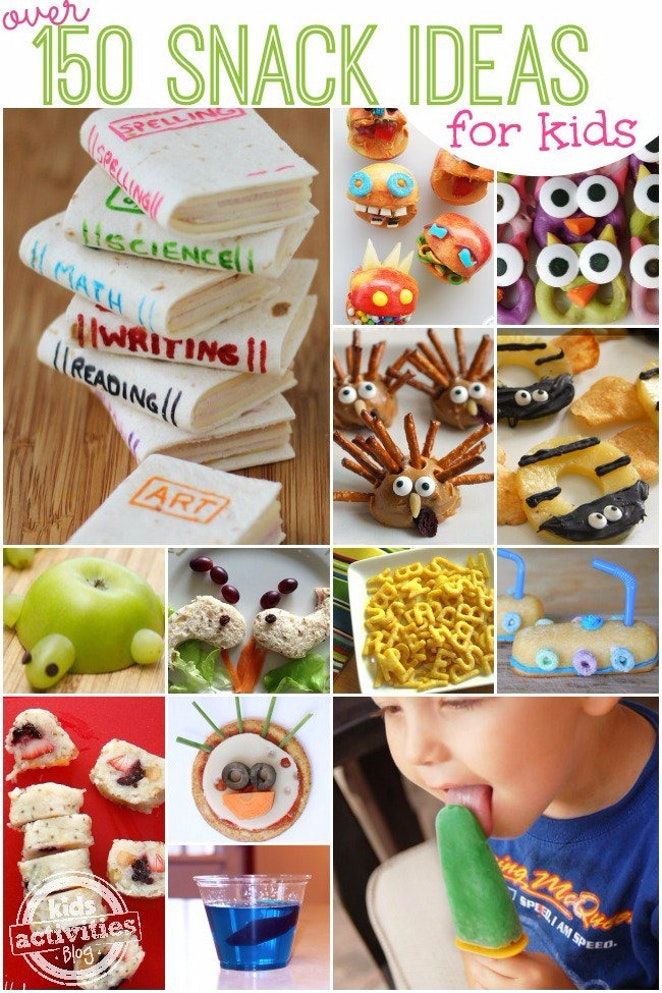
- Shredded cheese (thicker cuts are a little easier to pick up, mozzarella tends to be softest)
- Crumbled goat cheese
- Tofu, diced and sauteed lightly or steamed
- Lightly mashed or diced meatballs
- Shredded chicken, cut up finely (we love this Butter Chicken to share with baby)
- Ground beef, turkey, or chicken, cooked and broken into smaller pieces
- Lightly mashed beans
- Warmed frozen peas
- Scrambled eggs, broken up into small pieces
- Diced egg muffins
- Yogurt (plain whole milk)
- Homemade Yogurt Melts
- Cottage cheese
- Simple smoothie (made with plain nondairy milk or yogurt)
Snacks to Serve Baby in a Pouch
Reusable pouches are super handy for babies and one year olds (and older toddlers too!). We love the 3.5 ounce Squeasy Gear silicone pouch since it’s virtually spill-proof. I started using it around 7 months with my kids to offer foods including yogurt, simple smoothies, warm (not hot) pureed soups, overnight oats, and all sorts of Homemade Baby Food Pouches.
The Wee Sprout BPA-free pouches are also great and are very easy to wash.
Peas and scrambled eggsWhat’s the right portion for my baby?
There’s no “right” portion size, so my advice is to start with a very small amount to avoid food waste and offer more according to baby’s hunger—which may be more or less than you expect. Follow their lead as they are very in tune with their own hunger and fullness cues.
When should I feed baby snacks?
Typically, babies eat every 2-3 hours, so you will want to work the meals in between nursing or bottle sessions and naps. This can be hard to do until baby is closer to the 12 month mark, just logistically speaking, so don’t feel like you must do snacks if you can’t find the time and baby is getting plenty of calories from milk feedings and other meals.
What are the best foods for snacks?
I like to think of snacks as mini meals and serve all sorts of foods. This can help ensure that the littles are being introduced to all sorts of foods throughout the day and makes it easier to use up leftovers!
Best Store Bought Snacks for Littles
In addition to the single ingredient foods you can buy at the store, these packaged snacks are convenient ones to have on hand for snack time.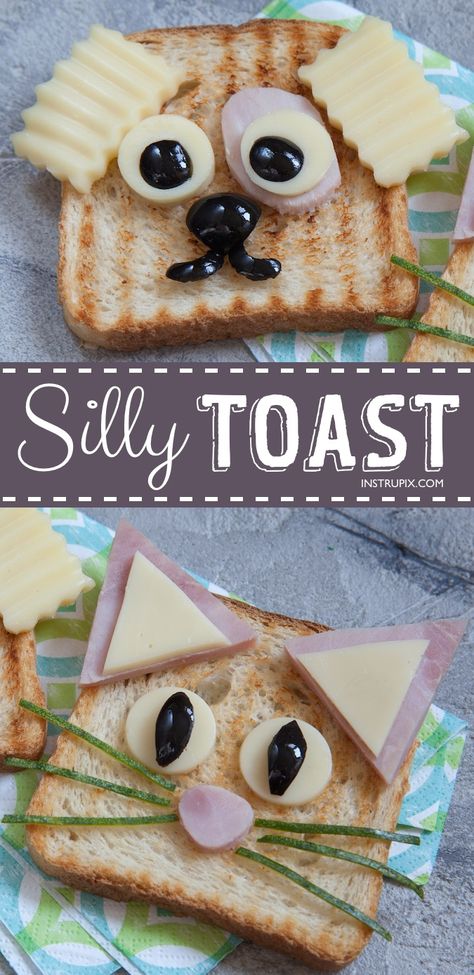
- 12-Grain Mini Round Crackers from Trader Joes (these are softer than most other crackers)
- Amara Organic Smoothie Melts
- Baby food pouches
- Baby Yogurt (without added sugars)
- Baby Puffs
- Chex cereal (soften in nondairy unsweetened milk or yogurt as needed)
- Diced whole grain bread with applesauce or any fruit puree, or mashed avocado
- Freeze-dried fruit
- Peanut Butter Puffs
- O cereal (soften in nondairy unsweetened milk or yogurt as needed)
TIP: The Amara Smoothie Melts are a brand new snack option. They’re made with fruits and veggies and have a melt-in-the-mouth texture. My kids love them! (sponsored link)
Best Recipes for Healthy Baby Snacks
If you want to make some snacks at home that are a little more than just single ingredient foods, here are my top picks.
- Apple Puree
- Applesauce Overnight Oats
- Apple Yogurt
- Baby Food Combinations (any of these work!)
- Baked Oatmeal Bites
- Banana Yogurt
- Egg Muffins with Veggies
- Mango Smoothie
- Peanut Butter Puree
- Pear Puree
- 60-Second Scrambled Egg
- Simple Green Smoothie (use nondairy plain milk)
- Soft-Baked Granola Bars (closer to 12 months)
- Spinach Banana Pancake
- Sugar-Free Banana Muffins
- Sweet Potato Yogurt (with plain yogurt)
TIP: My favorite storage containers for kids snacks include the WeeSprout glass containers (shown below on the left with the colorful lids), the Beaba Clip Containers, and the Wean Green Storage Cubes.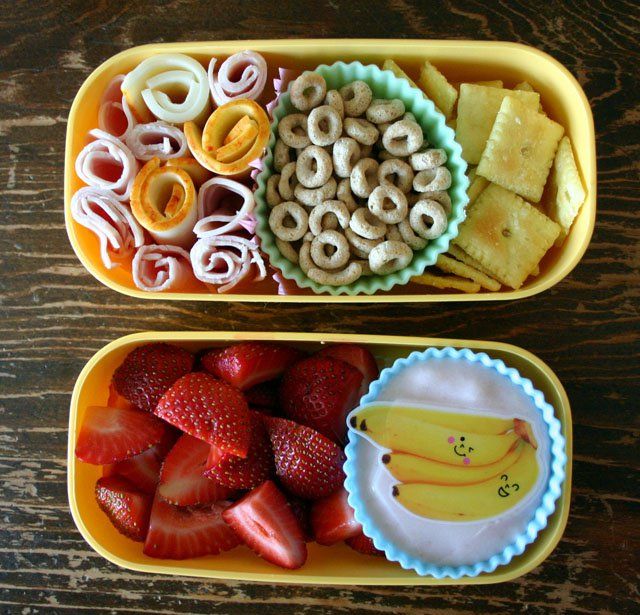
Best Tips for Baby Snacks
- Aim to offer 2 foods (or more) from different food groups at each snack so baby has the opportunity to have a mix of nutrients.
- Aim for at least one of the foods to have fat and/or protein to help baby feel satisfied.
- If a food seems too slippery for baby to pick up or they’re otherwise having trouble, put the food onto a utensil, cut it differently, or otherwise help them eat the food.
- Try to avoid serving meals or snacks when baby is tired or is specifically hungry for their milk feedings—it takes them a while to connect solid food as a way to satisfy hunger, so be patient with that process of learning.
- Start with small portions to avoid food waste and offer more according to baby’s unique hunger.
- It can take kids time to learn to like a wide range of foods, so offer a range of foods throughout the week—and offer foods they didn’t eat (making sure it’s easy to eat and tastes good) so they have the chance to learn to like them.

- Keep meals free from pressure and fun without forcing baby to eat a certain amount of food.
- Sit with baby as you can and model eating so they have someone to copy—they are new to this and the more information they have (visual, verbal, etc), the better they can learn!
If you have any questions about feeding your baby or one year old, or any of these food suggestions, comment below and I will do my best to help!
Prep Time 5 minutes
Cook Time 0 minutes
Total Time 5 minutes
Author Amy Palanjian
Cuisine American
Course Baby Food
Calories 85kcal
Servings 1
Fruit and Veggie Snacks (start with 1-2 tbsp and offer more according to hunger)
- ▢ 1-2 tbsp Avocado diced and mashed slightly (be sure it’s ripe and very soft)
- ▢ 1-2 tbsp Banana broken into small segments (they are less slippery this way versus slicing them)
- ▢ 1-3 ounces Baby Food Pouches
- ▢ 1-2 tbsp Blueberries cut in half or quarters
- ▢ 1 Clementine chopped into small pieces
- ▢ 1-2 tbsp Mango chopped into small pieces
- ▢ 1-2 tbsp Mashed roasted sweet potato broken up into small pieces
- ▢ 1-2 tbsp Peas
- ▢ 1-2 tbsp Raspberries broken into small pieces
- ▢ 1-2 tbsp Roasted Zucchini diced small
- ▢ 1-2 tbsp Roasted Sweet Potato or Butternut Squash diced
Carbohydrates (start with 1-2 tablespoons and offer more following baby's lead)
- ▢ 1 Baby Banana Muffin
- ▢ 1-2 tbsp Baby Puffs
- ▢ 1-2 tbsp Baked Oatmeal diced
- ▢ 1-2 tbsp Chex cereal soften in nondairy unsweetened milk or yogurt as needed
- ▢ 1-2 tbsp Leftover pasta rice, or oatmeal
- ▢ 1-2 tbsp O cereal soften in nondairy unsweetened milk or yogurt as needed
- ▢ 1-2 tbsp Peanut Butter Puffs
- ▢ 1 Spinach pancakes diced these are great to freeze and pull out of the freezer to warm one at a time
- ▢ 1/4 slice Whole grain bread diced with applesauce or any fruit puree, or mashed avocado
Protein Snacks (start with 1-2 tablespoons and offer more following baby's lead)
- ▢ 1-2 tbsp Beans lightly mashed
- ▢ 1-2 tbsp Cheese shredded (thicker cuts are a little easier to pick up, mozzarella tends to be softest)
- ▢ 1-2 tbsp Cottage cheese
- ▢ 1 Egg muffins diced
- ▢ 1-2 tbsp Goat cheese crumbled
- ▢ 1-2 tbsp Ground beef turkey, or chicken, cooked and broken into smaller pieces
- ▢ 1-2 tbsp Hummus
- ▢ 1 Meatball lightly mashed or diced
- ▢ 1-2 tbsp Peas
- ▢ 1 Scrambled eggs broken up into small pieces
- ▢ 1-3 ounces Simple smoothie made with plain nondairy milk or yogurt
- ▢ 1-2 tbsp Shredded chicken cut up finely (we love this Butter Chicken to share with baby)
- ▢ 1-2 tbsp Tofu diced and sauteed lightly or steamed
- ▢ 1-2 tbsp Yogurt plain whole milk
Choose 2 single ingredient foods (or more) or 1 food that is made from a mix of foods (like a pancake or egg muffin).

Cut up into small pieces or mash lightly.
Serve to baby, offering preloaded spoons as needed to help them eat. (It's okay if baby gets messy as they learn to eat, that's part of the process!)
Start with a small portion and serve more according to baby's hunger—it's okay if they eat more or less than you expect!
Offer water with snacks (and meals).
Store any leftovers in an airtight container in the fridge for 3-5 days.
Reusable Pouch
Storage Containers
Mixing Bowl
- Aim to offer 2 foods (or more) for each snack so baby has the opportunity to have a mix of nutrients.
- Aim for at least one of the foods to have fat and/or protein to help baby feel satisfied.
- If a food seems too slippery for baby to pick up or they're otherwise having trouble, put the food onto a utensil, cut it differently, or otherwise help them eat the food.

- Try to avoid serving meals or snacks when baby is tired or is specifically hungry for their milk feedings—it takes them a while to connect solid food as a way to satisfy hunger, so be patient with that process of learning.
- It can take kids time to learn to like a wide range of foods, so offer a range of foods throughout the week—and offer foods they didn't eat (making sure it's easy to eat and tastes good) so they have the chance to learn to like them.
- Keep meals free from pressure and fun without forcing baby to eat a certain amount of food.
- Sit with baby as you can and model eating so they have someone to copy—they are new to this and the more information they have (visual, verbal, etc), the better they can learn!
Calories: 85kcal, Carbohydrates: 2g, Protein: 4g, Fat: 7g, Saturated Fat: 3g, Polyunsaturated Fat: 1g, Monounsaturated Fat: 3g, Cholesterol: 16mg, Sodium: 94mg, Potassium: 90mg, Fiber: 1g, Sugar: 1g, Vitamin A: 173IU, Vitamin C: 2mg, Calcium: 110mg, Iron: 1mg
Tried this recipe?Rate in the comments and tag @yummytoddlerfood on IG!
20 snacks for a child at school from Eat at Home.
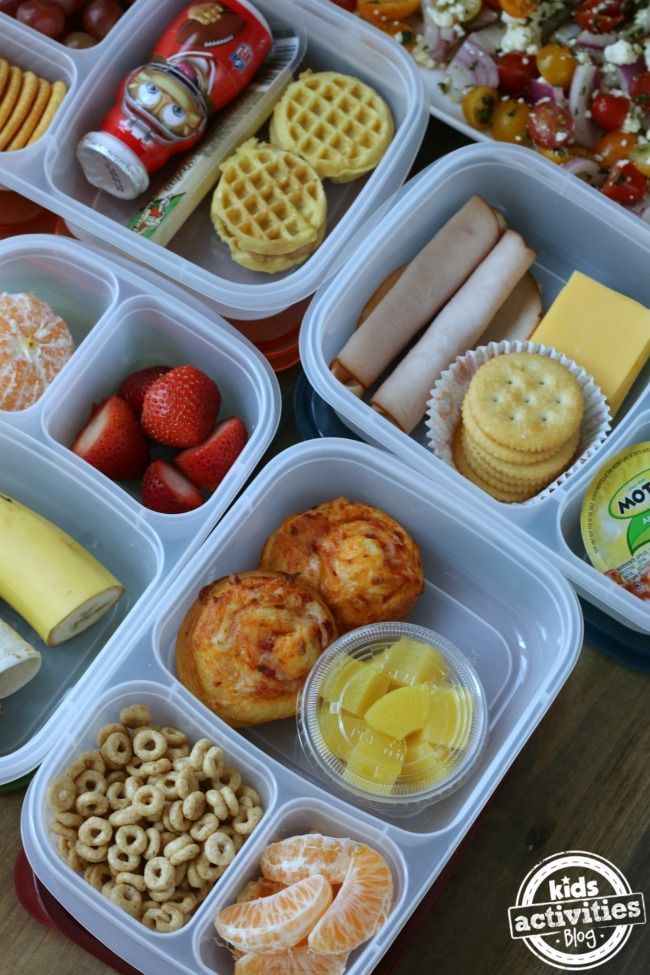 Cooking articles and life hacks
Cooking articles and life hacks With the advent of September, many parents have additional chores in the kitchen. After all, if a schoolchild grows in a family, his nutrition should be balanced. This also applies to snacks, which are always relevant for energetic and active children. Homemade food will help you avoid buying snacks with a dubious composition and will certainly bring more benefits. Most often, the preparation of the simplest recipes takes no more than an hour, they can be made in the evening and even several days in advance. In the selection you will find simple and affordable recipes, get inspired and delight your students.
Cheese Muffins
Delicious Cheese Muffins are the perfect snack for your child at school, on a picnic or on the road. Baking will be delicious both warm and cold.
Detailed recipe.
Baked Bread Bun Sandwich
Any round bun is suitable for making a sandwich, you can take pastries made from whole grain flour, with bran and cereals.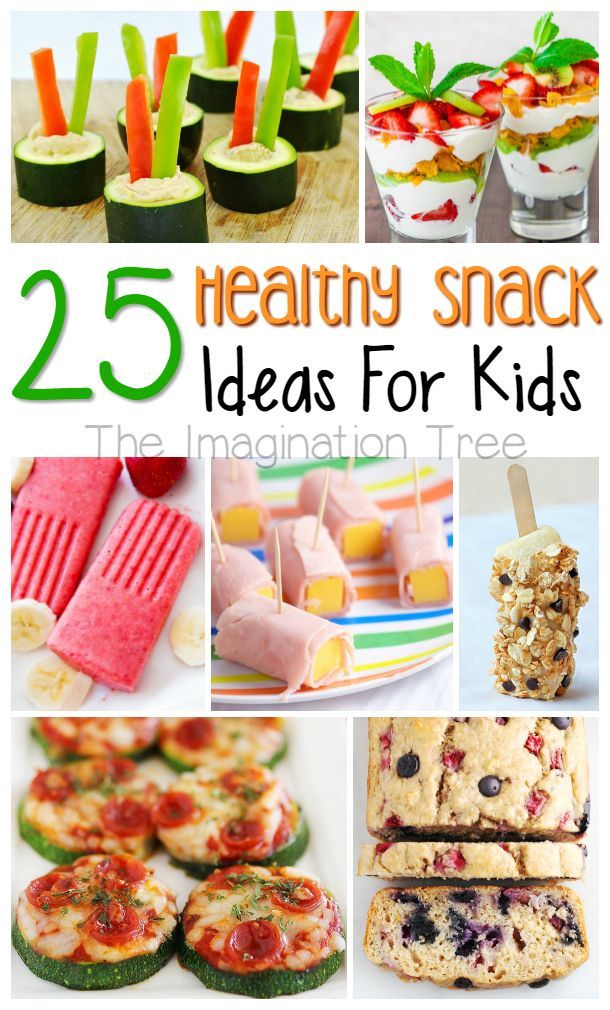 You can also vary the topping as you wish. Your student will be delighted with such a treat!
You can also vary the topping as you wish. Your student will be delighted with such a treat!
Detailed recipe.
Dried Fruit Bars
The key to proper nutrition is wholesome snacks. We offer to prepare bars from dried fruits and nuts. Store this treat in a cool, dry place in an airtight container.
Detailed recipe.
Oatmeal honey biscuits
Very tasty, fragrant honey biscuits, at the same time moderately sweet. Suitable for a snack, a light breakfast with milk, tea and as a school companion. Bake in just 15 minutes and delight your family!
Detailed recipe.
Sausage buns
Very soft and rich buns, reminiscent of brioche. And if you bake sausages in them, you get a great snack for a child to school. If desired, sausages can also be prepared at home in advance.
Detailed recipe.
Healthy sweets
What can children do without sweets? Be sure to spoil them with such treats, but make sweets at home from natural and healthy products. For this recipe, you will need dried apricots, prunes, walnuts, and use coconut flakes as a breading.
For this recipe, you will need dried apricots, prunes, walnuts, and use coconut flakes as a breading.
Detailed recipe.
Cheesy Chicken Sandwich
Chicken thighs, veal or turkey slices are perfect for this sandwich. The meat can be cut into small strips, then it will cook faster. It makes for a very tasty snack!
Detailed recipe.
Lemon Bars
Lemon pastry is the best for the autumn period. It is rich in vitamins C, A, B 1 , B 2 and mineral salts. Bars are tasty and fragrant, especially good when served cold with tea.
Detailed recipe.
Snack muffins with cheese, sausage and green peas
We make the dough for such muffins on kefir, and we take green peas, boiled sausage and hard cheese for the filling. The recipe is good not only for the speed of preparation, but also for the ability to change fillers. This is useful when you need to dispose of leftover food from the refrigerator or if the child prefers a particular ingredient.
Detailed recipe.
Carrot cakes
We offer to replace store-bought desserts with healthier ones and products that you can be sure of. Carrot cakes also come in handy if a school holiday is coming up.
Detailed recipe.
Raspberry muffins
Delicate soft muffins can be topped with absolutely any filling. It can be other berries or fruits, cut into pieces, peanut or chocolate paste, boiled condensed milk. And without filler they are good.
Detailed recipe.
The most delicious glazed curds
The secret of delicious glazed curds lies, of course, in quality products. The cooking process will not cause difficulties, just follow the detailed recipe.
Detailed recipe.
Cottage cheese rolls with filling
Cottage cheese is often added to baked goods, so in our selection you will find several recipes with this ingredient. Let's start with bagels. The set of products for the dough is as simple as possible: flour, cottage cheese, butter, sugar, baking powder.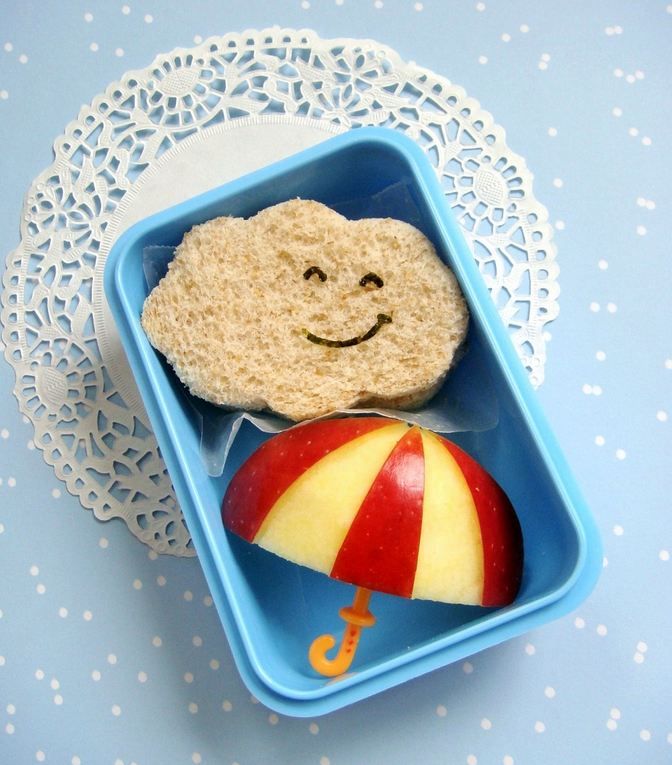 The filling can be different, the most affordable option is to use your favorite jam.
The filling can be different, the most affordable option is to use your favorite jam.
Detailed recipe.
Cheese Waffles
If you happen to own a waffle iron, don't miss this recipe. Fragrant ruddy waffles are prepared with rice flour, soft cottage cheese and cheese.
Detailed recipe.
Curd biscuits “Shells”
Delicate curd biscuits will please both children and adults. You can do it not just with sugar, as indicated in the recipe, but add your favorite berries, 1-2 pcs. in every cookie. The taste will only get better!
Detailed recipe.
Milk slice
Another version of a homemade dessert that a child can treat to school friends. For cooking, you need a powerful mixer and a little time. Make a treat in the evening and refrigerate, and in the morning simply cut into portions and wrap up with you.
Detailed recipe.
Lavender biscuits
Coconut and lavender flavored crumbly biscuits are sure to be a novelty for young households, but they will definitely like them.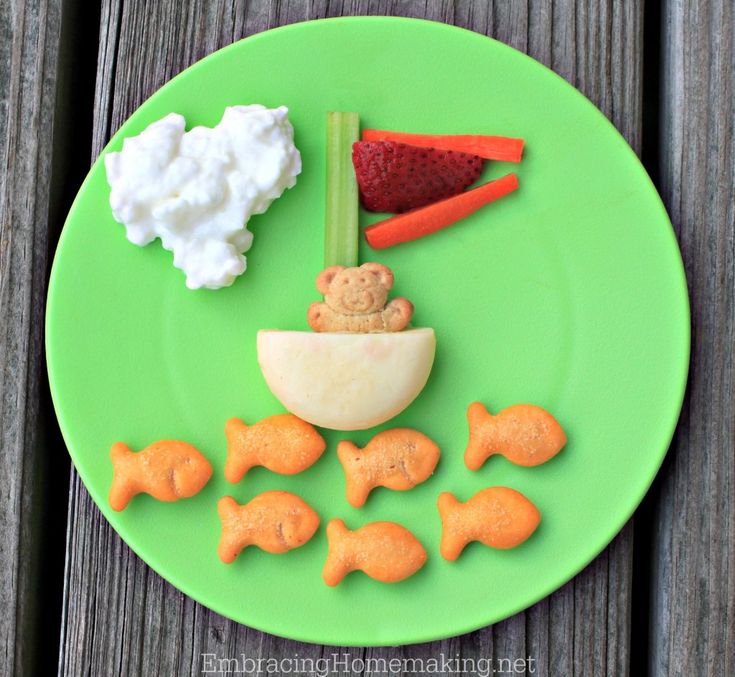 If you have not prepared such pastries, take note.
If you have not prepared such pastries, take note.
Detailed recipe.
Cottage Cheese Casserole with Cherry Sauce
Everything is as easy as shelling pears here: mix the ingredients, bake, and you're done! And what is the result ... Cottage cheese casserole is tender, like a cloud. And be sure to cook the cherry sauce. Real jam!
Detailed recipe.
Cantucci - Italian biscuits
Italian biscuits for when your child wants to crunch. Baking contains almonds, which is especially useful for a student.
Detailed recipe.
Juicy Apple Pie
The bulk apple pie is very juicy and moderately sweet. Its texture is more like a light fluffy pudding. Put a couple of pieces in a container and be sure that your child will not be sad at recess.
Detailed recipe.
Not every child will want to eat healthy dried fruit candies or whole grain biscuits. But even after preparing rich homemade buns, you will be sure that they do not contain palm oil, flavor enhancers and preservatives, which almost all manufacturers sin.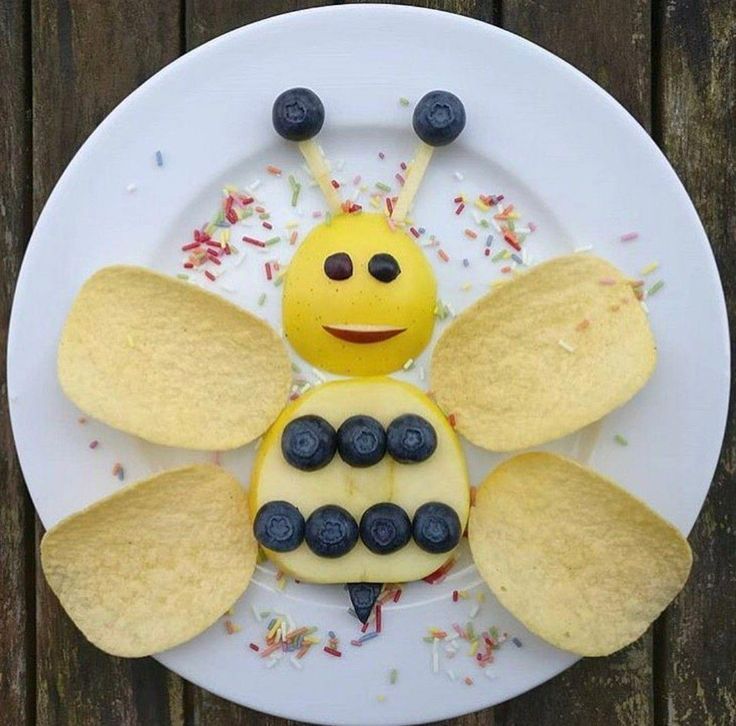 Let your schoolboy grow up healthy and let him be tasty!
Let your schoolboy grow up healthy and let him be tasty!
5 healthy school snacks for a child
The whole truth about how to choose a backpack for a first grader.
- Articles
- 5 Healthy School Snacks for Your Child
With the onset of autumn, all parents begin to be tormented by the question of what to give their child a snack to school, because you need the dishes to be nutritious, healthy, varied, and also convenient for quick consumption on the go without cutlery. In addition, it is necessary that the content of the lunch box is liked by the child himself and he wants to take homemade food with him.
At first glance, it seems that this task is not an easy one, but we have structured for you all the necessary information about the child's nutrition during school time and have collected the most successful recipes that will not take much time and effort.
General principles for creating healthy and tasty school snacks for a child
The daily routine of a schoolchild includes 3 main and 1-2 additional meals (for more details about the daily routine for a school-age child, read our article “The daily routine of a schoolchild. Making the right routine”), so a student cannot do without a snack at school.
Understanding what should be in the child’s diet and what should not be there, you can create a wide variety of snack options based on the preferences of the student and his characteristics.
When assembling a children's school lunch box for a snack, remember that the child's body needs complex nutrition, including all the basic elements, vitamins and minerals. When choosing products, analyze whether they can retain their usefulness: freshness after lying for several hours in a backpack.
What should I give for a snack at school?
A proper and healthy snack should include:
-
Beverage.
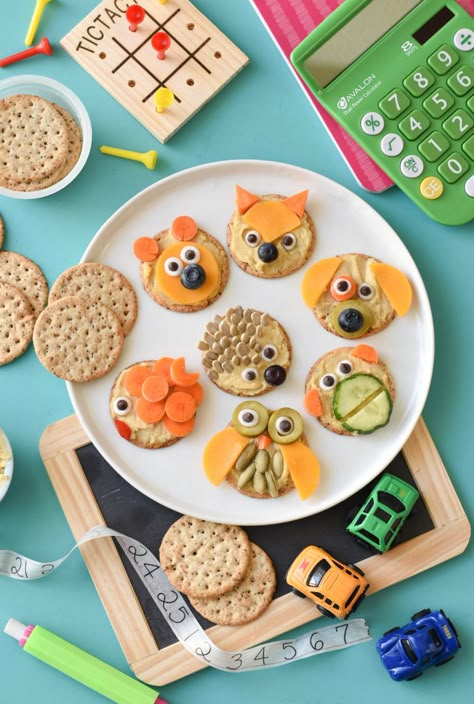 Pediatricians recommend giving preference to plain still water and homemade compotes without sugar.
Pediatricians recommend giving preference to plain still water and homemade compotes without sugar. -
Bread. This is the easiest and healthiest way to get carbohydrates while snacking. Just remember that it is better to buy whole grain bread or mixed with bran and seeds.
-
Protein. Depending on the child's diet and taste preferences, a protein source for a snack can be egg, red meat (veal), white meat (chicken, turkey), or fish.
-
Fresh fruits and vegetables. With them during a snack, the child will receive useful fiber, as well as a portion of vitamins and minerals. When choosing fruits and vegetables for a snack at school, think about the convenience of eating them, for example, a cucumber would be a good option, but it is better to refuse a tomato, as they have a lot of liquid, which can get your child dirty.
-
Dairy products.
 This item is a little controversial because dairy products are essential in a child's diet, but they spoil quickly at room temperature, so milk, yoghurts and kefirs can only be given if your child will have a snack in the next hour or an hour and a half after coming to school.
This item is a little controversial because dairy products are essential in a child's diet, but they spoil quickly at room temperature, so milk, yoghurts and kefirs can only be given if your child will have a snack in the next hour or an hour and a half after coming to school.
What can not be given for snacks at school?
Everything here is quite simple and unambiguous. Schoolchildren, regardless of age, are not recommended to give as a snack sweet carbonated drinks, packaged juices, sweets in any variations (lollipops, chocolate, cakes, waffles, etc.), semi-finished meat products (sausages, sausage) and other products that do not bring any benefit to the growing organism. It is worth avoiding these products not only within the walls of the school, but also excluding or strictly limiting their intake in principle.
What to cook for a snack at school?
We have compiled for you 5 great basic PP snack recipes for school that your child will love and give him strength and energy for the whole school day.
School snack recipe #1 Lavash rolls
To prepare rolls for a snack at school, you will need the usual Armenian lavash stuffing to your liking. The main advantage of this dish is convenience. If you carefully folded the roll, then the child will not fall out while eating and he will not get dirty in the process.
So, anything can be wrapped in pita bread, and we offer the following combination: baked chicken or turkey breast, hard cheese, green salad leaves, grated fresh carrots and cucumber. You can make a wide variety of variations, including dietary or vegetarian options.
Sauces are optional, but we recommend that you do without them altogether so that all the ingredients of the filling stay fresh longer.
School snack recipe #2 Sandwiches
Sandwiches differ from classic sandwiches in that the filling is located not on one slice of bread, but between two slices, which makes this dish also convenient to eat out of the house.
There are a lot of recipes for delicious and healthy sandwiches. Here are some non-banal ideas from us, what can be put on bread:
-
canned tuna, bell peppers and olive oil;
-
hard, salty cheese, such as cheddar and green apple or pear slices
-
cream cheese and cucumber;
-
processed cheese, sweet pepper and boiled chicken breast;
-
mayonnaise (homemade), cucumber, veal boiled pork.
School Snack Recipe #3 Pizza Buns
All children love pizza, but taking a slice of pizza to school is not at all convenient. No problem! Prepare delicious buns for your child that will taste no different from his favorite dish.
Prepare the basic yeast dough as for pizza and roll it into a thin rectangle. Lubricate it with tomato sauce and sprinkle with grated cheese. Put finely chopped ham or boiled chicken on top and roll a roll from a rectangle. Next, cut it into circles at least 2-3 centimeters thick and place the buns on a baking sheet. Bake products at a temperature of 180 degrees for about 25-30 minutes until golden brown.
Next, cut it into circles at least 2-3 centimeters thick and place the buns on a baking sheet. Bake products at a temperature of 180 degrees for about 25-30 minutes until golden brown.
This recipe is quite time consuming, but you can make a batch of buns and freeze them after baking. Then you will only need to get the required number of buns and defrost them before school.
School Snack Recipe #4 Mini Broccoli Quiche
How to get your child to eat healthy vegetables like broccoli? Hide them in the thickness of a delicious fill of milk, eggs and cheese!
This recipe can also be considered basic and adjust it for yourself. As vegetables for the filling, you can take zucchini, cauliflower, carrots, etc.
To create mini quiches, you will need unsweetened shortcrust pastry (any recipe you have tested), tartlet molds, boiled vegetables, and a mixture of eggs, milk or cream of low-fat and hard grated cheese.
Put the dough rolled out in a thin layer into molds, add finely chopped vegetables and pour the egg-milk mixture. Bake at 190 degrees for about 15 minutes until golden brown.
Bake at 190 degrees for about 15 minutes until golden brown.
School snack recipe #5 Granola bars
If your child loves sweets, but doesn't really like porridge, we offer you the perfect solution - oatmeal granola.
Mix raw oatmeal, various dried fruits (dates, figs, dried apricots, raisins) and seeds (pumpkin seeds, sunflower seeds, etc.) in a bowl. Add some honey to the mixture so that all the ingredients stick together and put the mass on a baking sheet. Form a rectangle 1.5-2 centimeters high and cut it into bars of a convenient size. Dry in the oven for 15 minutes and let cool completely. You will get a very tasty snack and dessert that you can take with you to school.
What if my child doesn't want to take snacks to school?
In this case, beautiful school lunch boxes and bottles for drinks will perfectly help. Try to make the snack dishes themselves as colorful as possible by adding foods that contrast in color.
Also try to give your child a choice.


